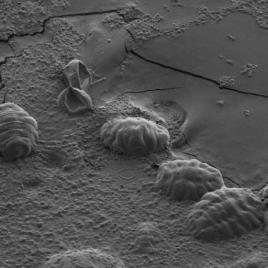How big a young shark grows up to be, and how fast it grows, may depend on where it feeds. Researchers observed a population of juvenile sharks in a nursery that contained both a high-risk habitat (open seagrass beds) and a low-risk one (protected mangroves). Sharks that preferred to feed in the mangroves were generally smaller and grew at a slower rate, while bigger sharks chose the exposed seagrass beds to feed on. Authors conclude that this selection of size traits based on feeding habits and predation risk may be critical to adaptation in predator-driven marine ecosystems.
Authors:
Nigel E. Hussey, Joseph D. DiBattista, Jonathan W. Moore, Eric J. Ward, Aaron T. Fisk, Steven Kessel, Tristan L. Guttridge, Kevin A. Feldheim, Bryan R. Franks, Samuel H. Gruber, Ornella C. Weideli, Demian D. Chapman
Corresponding author:
Nigel Hussey, Biological Sciences, University of Windsor, Email: nehussey@uwindsor.ca
Original paper published on April 4, 2017 in Proceedings of the Royal Society B: Biological Sciences.

